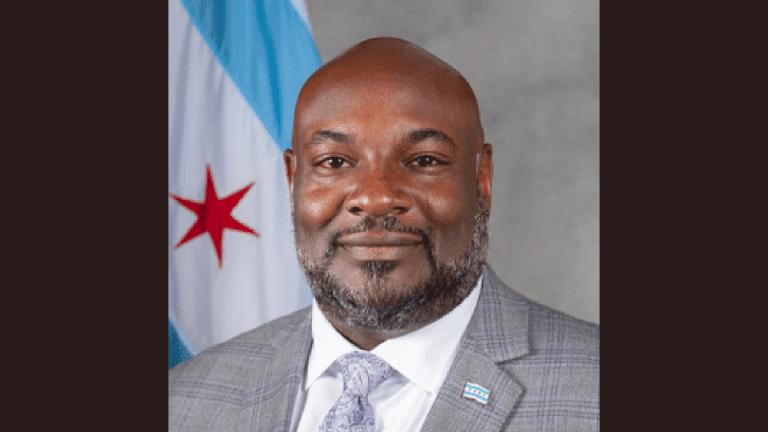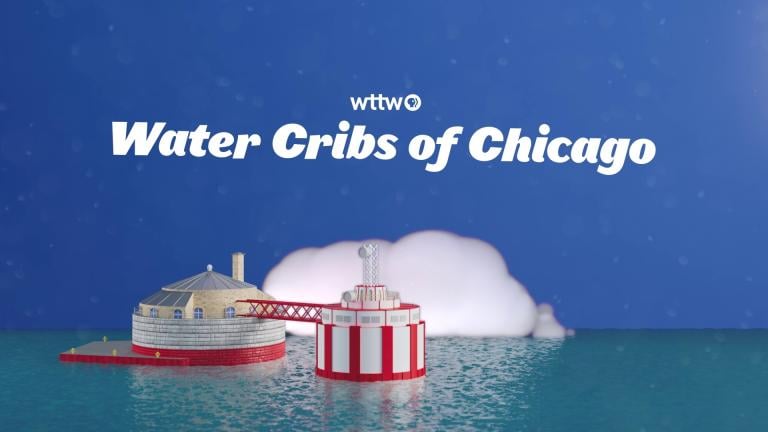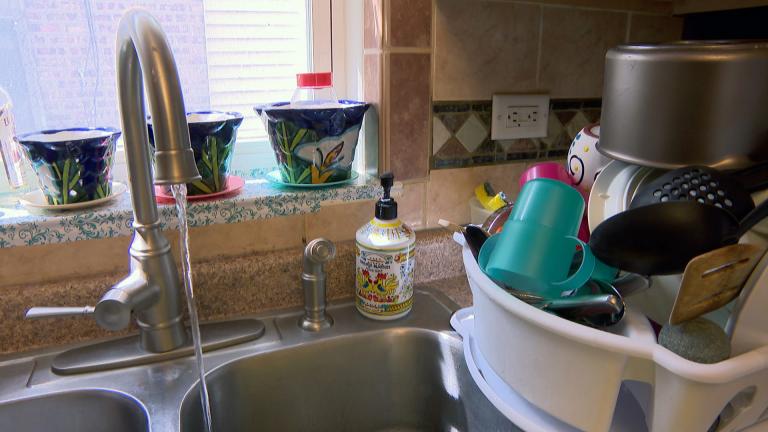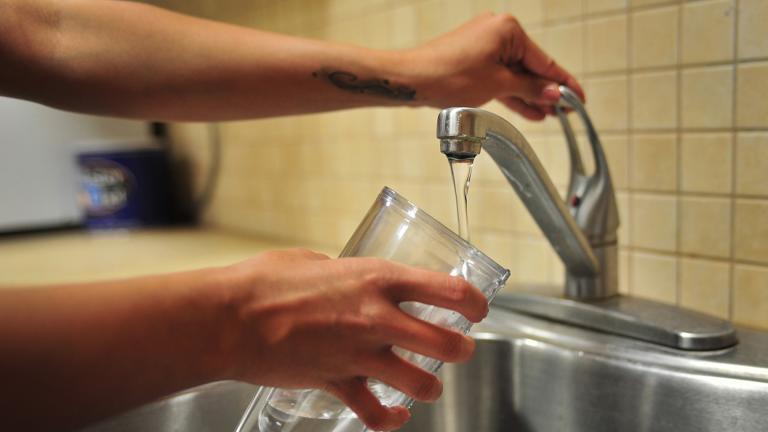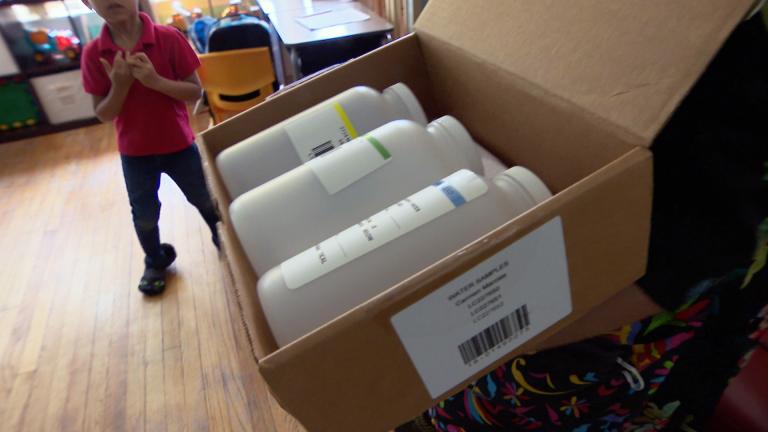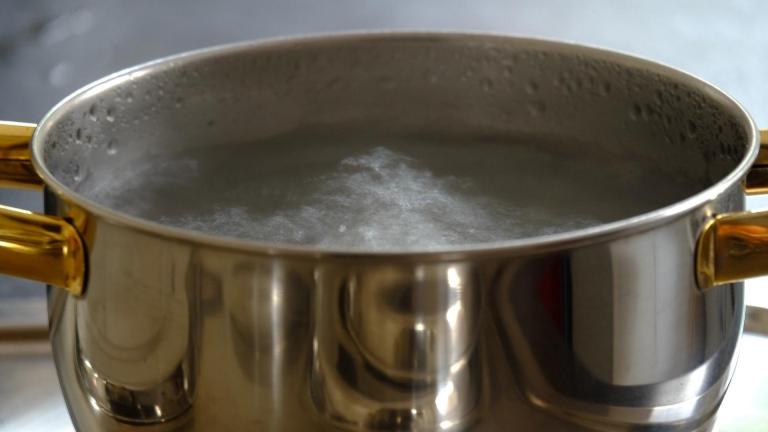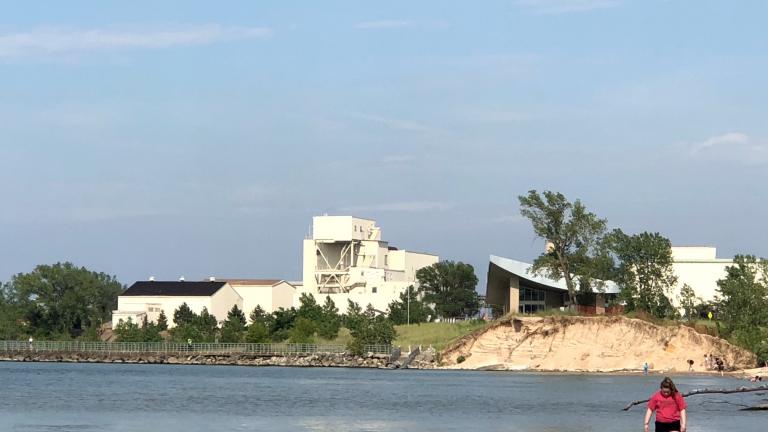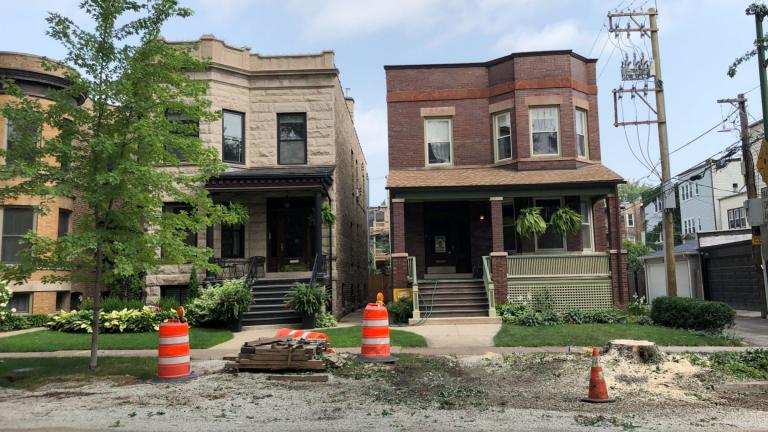Mayor Brandon Johnson praised former Water Commissioner Randy Conner as a “proven leader and someone who knows the ins and outs of infrastructure and water management,” in a statement.
Chicago Water Department
Meet Ellis Chesbrough, Chicago’s first city engineer and designer of the water delivery system we still use today. WTTW News Explains how water cribs work out on Lake Michigan.
A 2022 Guardian analysis found that majority Black and Latino neighborhoods had the highest concentration of lead in their tap water. As of a few months ago, the city of Chicago had replaced fewer than 300 lead service lines out of about 390,000.
Starting Jan. 1, city crews will have to replace all of the lead service lines connected to a water main that is being repaired — and foot the bill, which is expected to cost between $15,000 to $26,000 per line.
Despite promises, a federally-funded program has removed just 154 lead service lines from Chicago homes as of Monday, according to data provided to WTTW News by the Department of Water Management.
The unanimous vote of the City Council’s Budget and Government Operations Committee sends the proposal backed by Lightfoot to the full City Council for consideration at its meeting on May 25.
Lead service lines connect approximately 400,000 Chicago homes with water mains buried under city streets, and can leach a brain-damaging chemical into drinking water.
In an interview with “Chicago Tonight” Tuesday, Department of Water Commissioner Andrea Cheng said officials are confident both regular and ultrasonic water meters can be safely installed in Chicago homes without threatening the health of residents.
Department of Water Management Commissioner Andrea Cheng said federal funding will “jump-start” Chicago’s efforts to remove the lead service. Cheng acknowledged logistical challenges have meant the program has failed to achieve what Lightfoot promised in September 2020, when she vowed that the city would remove 650 pipes by the end of 2021.
The $1 trillion bipartisan infrastructure bill includes $15 billion to fund lead service replacement efforts, and $3 billion will flow to states and cities in 2022, officials announced.
Despite the watchdog's findings, Chicago officials insisted that ComEd was responsible for the outages.
The Chicago Department of Water Management is calling on the EPA to make protection of Lake Michigan from industrial pollution a priority after U.S. Steel’s Midwest Plant experienced two leaks in two weeks into a waterway that feeds into the region’s source of drinking water.
The commissioner of the Chicago Department of Water Management told members of the City Council that it was “quite impressive” that city crews had replaced 10 of the approximately 400,000 lead service lines responsible for contaminating Chicagoans’ tap water in 13 months.
As Chicago inches toward the replacement of its lead service lines, officials need help identifying where those pipes are. Here’s a simple way to determine whether you’ve got lead, steel or copper lines running into your home.
The city has been testing alternatives to open-trench digging and tree removal during pipe replacement and repair projects. Failure of one new technique spelled the end of the line for a slew of trees in Chicago’s Andersonville neighborhood.
The $1 trillion bipartisan infrastructure plan that advanced Tuesday in the Senate includes $15 billion to replace the lead service lines responsible for contaminating the tap water in approximately 10 million homes across the country.

